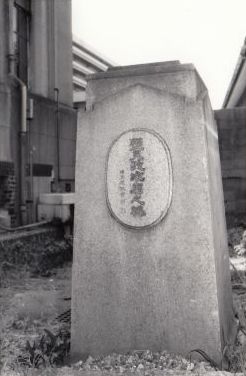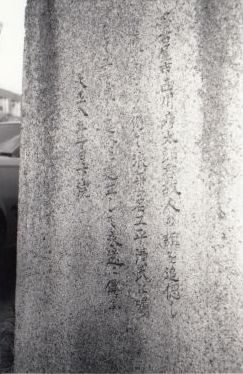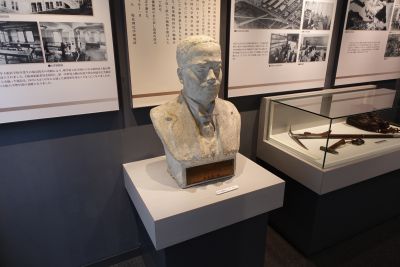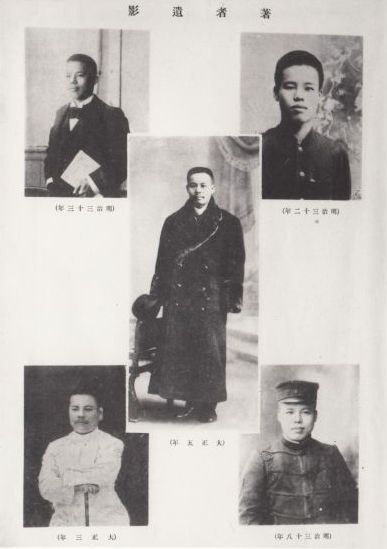Masaji Shiomi’s commitment and dream
Masaji Shiomi
“What’s essential to practically all those who are aspiring to become entrepreneurs is to cultivate the knowledge of physics and chemistry.”
“Neglecting to cultivate the fundamental knowledge may not be culturally condemned but it will surely disable independence.”
Masaji Shiomi was born on January 5, 1878 as the second son of Ryuzo Shiomi*(塩見隆造) in Oaza-kaidani,Nishikawa-mura, Kume-gun, Mimasakanokuni, Okayama Prefecture. To carry on the medical practice started by his forefathers, Masaji Shiomi studied at the Osaka School of Medicine, the predecessor of the Faculty of Medicine, The University of Osaka, and graduated in July 1903. In that year, he became an assistant in the School of Medicine (Physiology), College of Medicine, Kyoto Imperial University. Next year in December, Shiomi enlisted in the Army. After the honorary discharge, Shiomi opened a clinic in 1903 in Koraibashi, Osaka. Later, he worked as a military physician in Hamada, Hiroshima and others during the Russo-Japanese War. Upon returning to Osaka, he became involved in the public health policy of Osaka City and in other medical activities. In addition, Shiomi established Kitao Chemical Research Institute together with Masakiyo Ogata (husband of Chie, grandchild of Koan Ogata) in 1907 and engaged himself actively in the business world, for example by manufacturing and selling a new drug called respiratin.
Another turning point came when Shiomi noticed that Japan at that time depended on imports for all its zinc needs. He founded Osaka Mining Testing Center in Amagasaki in 1909 for the research on zinc smelting in order to mitigate the dependency. In 1911, Shiomi established Osaka Zinc Company with the support of the Fujita Group headed by Denzaburo Fujita and became Senior Managing Director to further develop the company’s business. The business grew rapidly due in part to the sharp increase of demand worldwide caused by World War I. Shiomi became very busy with the business and his health deteriorated gradually, resulting in his death at the young age of 37 on October 24, 1916[2].
Shiomi in the hospital bed wrote his autobiography, “Half of My Life”[3]. In this book, he described his thoughts. The book well conveys his personality and quality.
“Depending on the benefits left by my ancestors, not using them for the young people, is what I admonish the most.”
“When choosing people to associate with and when employing people, focus mainly on the personality and avoid persons without good personalities even if they have strong points.”
Originally, Masaji Shiomi hoped to procure a large lot in Sumiyoshi, Kobe and to operate an authentic physical and chemical research center. However, Shiomi realized that his death was near and asked Aihiko Sata, a university president who had developed his alma mater into Prefectural Medical University of Osaka, to visit him at the bedside on October 6, a few days before Shiomi's death, and entrusted him with the mission of establishing the research center toward the founding of a science university. Aihiko Sata worked hard on the establishment of the research center while Shiomi was still alive. Sata obtained permission for establishing the research center from the government on October 21, but unfortunately Shiomi died immediately after. Thus, Shiomi was unable to see the completed research center. A bronze statue of Masaji Shiomi was created in honor of his accomplishment, but only the platform remains today because the statue was collected during the war for the recovery and contribution of metal to the war effort. The bust statue was reproduced with plaster in 1955 and it is presently displayed in the Museum of The University of Osaka.



[2] According to Shiomi’s autobiography[3] and the article written by his attending physician. Some newspaper articles and others at that time reported that Masaji Shiomi died on October 22.
[3] “Half of My Life” authored by Masaji Shiomi and edited by Kenichi Takami* (高見建一) (1971). Kenichi Takami was Masaji Shiomi’s brother-in-law.
* "Romaji” expressions were conjectured based on the kanji characters.
